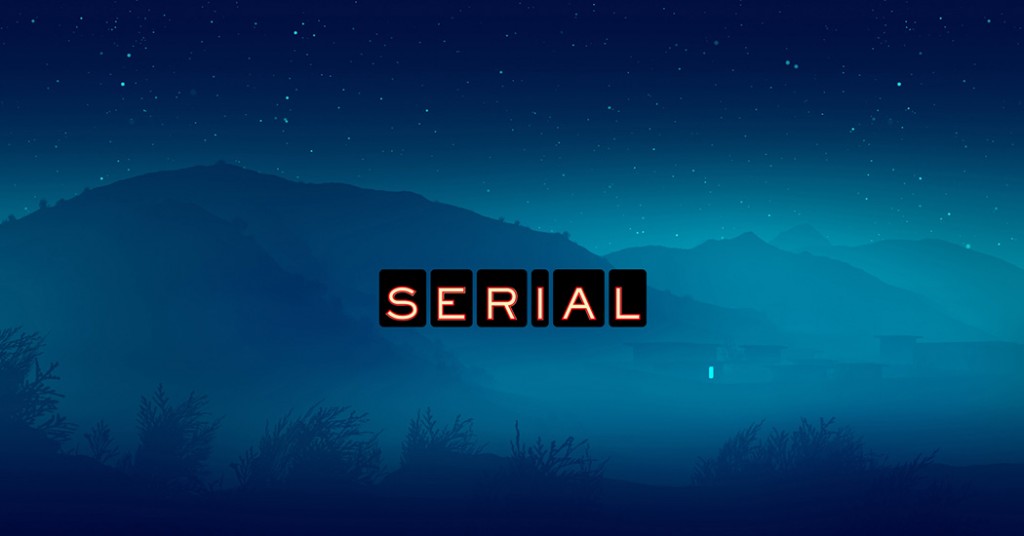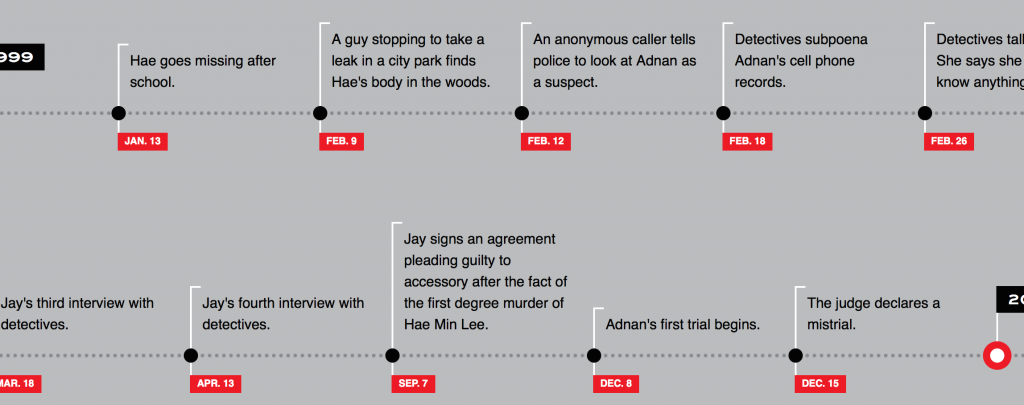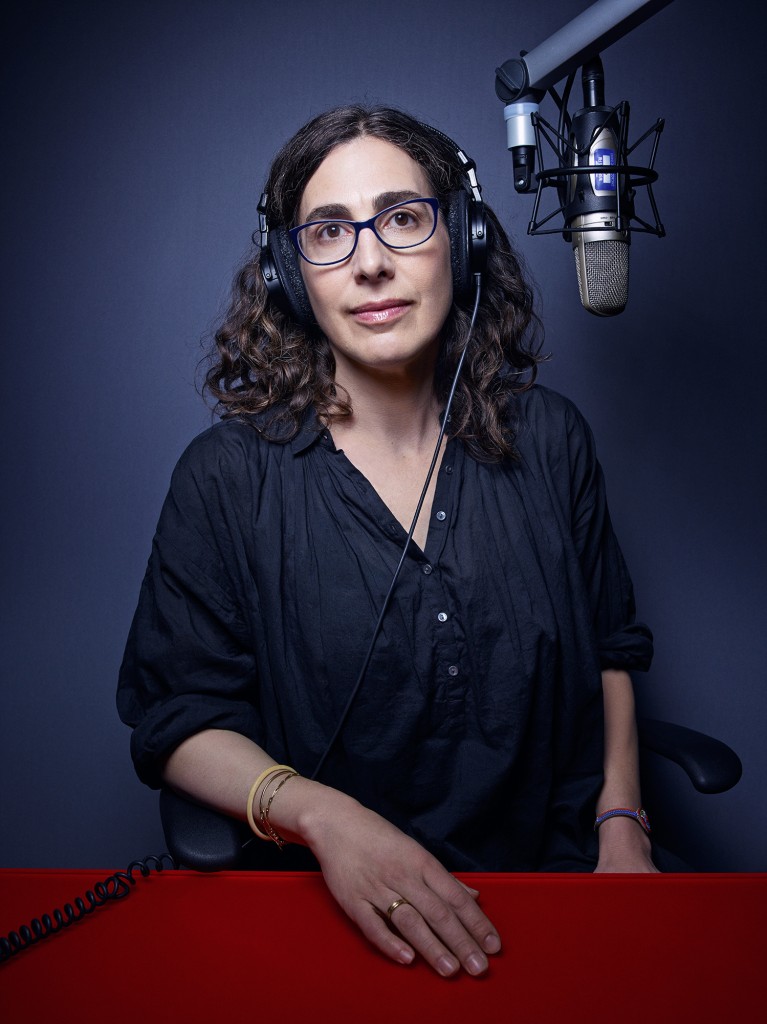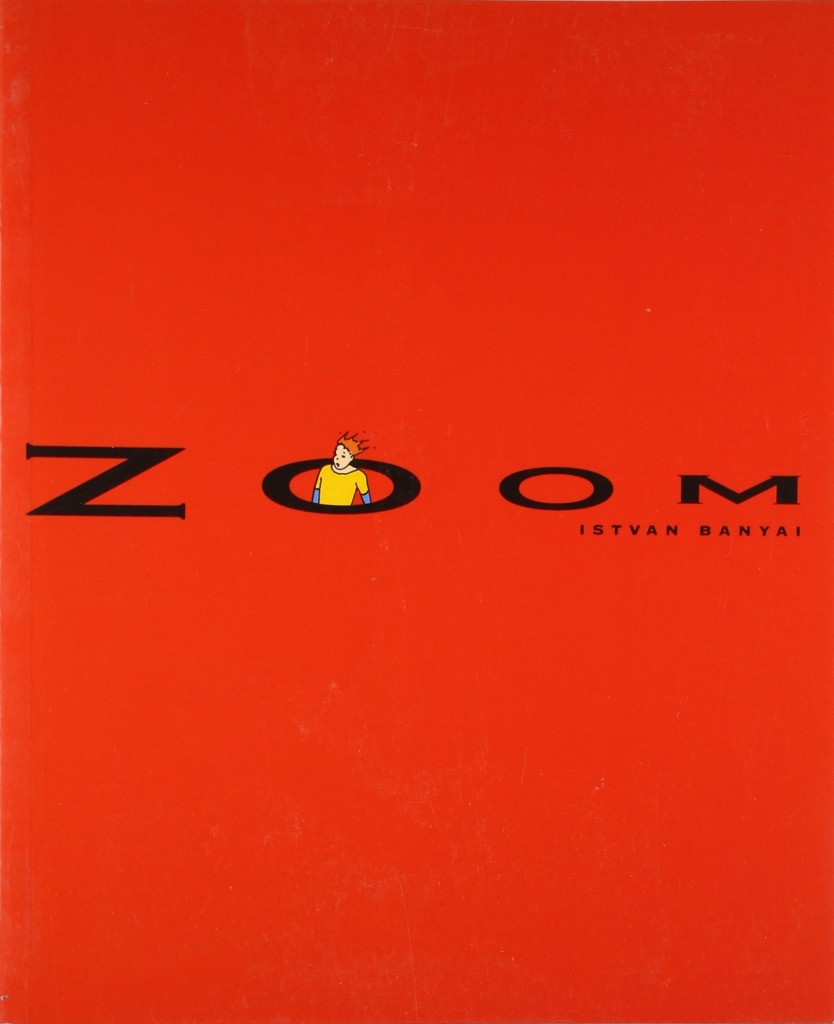Serial Goes Missing

You could cite the sponsorship of Audible, the rise of Midroll Media, Gimlet and PRX’s Radiotopia, galvanizing events like Podcast Movement and the Third Coast International Audio Festival, but ask anyone and they will say that it was Serial and its 100 million downloads that elevated narrative-driven podcasting from dorky obscurity back in 2014. Serial was mainstream. Serial intensified and also transcended the This American Life aesthetic. Serial was serious.
It also clarified the affect surrounding its own mode of consumption. One did not merely follow Serial or like Serial in 2014; one was “obsessed” with Serial. It’s the word that came up most often in the coverage, and served as grist for ridicule and derivative works, of which there are now many – Breakdown, Another Dead Man Walking, Limetown. If TV has taken on the metaphor of substance abuse these days (we are “addicted” to Making a Murderer, we “binge” on Scandal), narrative-driven podcasting has taken on the argot of infatuation, of compulsion, of love.
That response was prompted by the podcast itself. Early in the first episode, there is a bit of theater when Sarah Koenig reflects on how a meeting with lawyer Rabia Chaudry prompted her investigation of the murder of Baltimore teenager Hae Min Lee and the issue of whether or not Lee’s former boyfriend Adnan Syed had really committed it. In an aside, Koenig uses the technique of false improvisation, seeming to rethink a word in mid-sentence, although the line strikes the ear as scripted:
This conversation with Rabia […] this is what launched me on this year long – obsession is maybe too strong a word – let’s say fascination, with this case.
Let’s not. When this first aired, here on Antenna Jason Mittell made the argument that the main character of Serial wasn’t Syed at all, but Koenig herself. In retrospect I’d go further. Because the show dramatizes how engrossed its host became with the investigation she was performing, her obsession was the “protagonist” of the show. After all, that which drives Serial’s seriality is neither the chronology of the story nor that of its reconstruction, but Koenig’s internal thought process, her uncertainty when faced with multiple avenues of interpretation afforded by the same datum. Remember the Nisha Call, the pay phone at Best Buy, Syed stealing from the donations at his mosque? We listened to Koenig organize and reorganize each of these, value and devalue them, recursively, incredulously, passionately. We listened to Koenig struggling with the stubborn ambiguity of an ever-growing wall of details. That is why (as critics are starting to realize) imitating Serial’s narrative is impossible to do without recreating its narration.

So Serial’s thorniest philosophical problem was never with ethics, but instead with something closer to hermeneutics. The last lines of the twelfth episode speak to this theme:
When Rabia first told me about Adnan’s case, certainty, one way or the other seemed so attainable. We just needed to get the right documents, spend enough time, talk to the right people, find his alibi. Then I did find Asia, and she was real and she remembered and we all thought “how hard could this possibly be? We just have to keep going.” Now, more than a year later, I feel like shaking everyone by the shoulders like an aggravated cop. Don’t tell me Adnan’s a nice guy, don’t tell me Jay was scared, don’t tell me who might have made some five second phone call. Just tell me the facts ma’am, because we didn’t have them fifteen years ago and we still don’t have them now.
In an ironic touch, Koenig cites detective Joe “Just the Facts” Friday of Dragnet, radio’s paragon of positivist “keeping going,” as she expresses skepticism about the certainty that such a method provides. What was at stake in Koenig’s obsession, ultimately, wasn’t her feelings towards Adnan (the allegation of romantic attachment strikes me as both unsupported and misogynistic) but her worry that certainty about him is unavailable. What if the truth isn’t out there? That is the fear to which Koenig was professionally and emotionally vulnerable, and by foregrounding that exposure rather than subordinating it, she gave the show dimension, made it special and weird.

Last month Serial returned, now with seven new staff members and a host of collaborators, including Mark Boal’s Page One film company, tackling an elusive subject: the disappearance and search for Bowe Bergdahl, an American soldier who left his post in Afghanistan one night in June 2009 and was returned after a prisoner swap five years later.
The topic is complex, but in adopting it Koenig also marginalizes her own voice. We hear little about her own thinking, opinions, epistemological struggles. The first episode ends dramatically, with a phone ringing and Koenig explaining “That’s me, calling the Taliban.” But this is almost the only moment of personal ownership in the episode. By contrast, the first installment of Season 1 was full of that:
… This search sometimes feels undignified on my part …
… I have to know if Adnan really was in the library at 2:36 PM …
… If you’re wondering why I went so nuts on this story versus some other murder case, the best I can explain is this is the one that came to me …
 In the Season 1 launch she uses the object pronoun form “me” 14 times to refer to herself. In the launch of Season 2 she only uses it four times.
In the Season 1 launch she uses the object pronoun form “me” 14 times to refer to herself. In the launch of Season 2 she only uses it four times.
She’s an outsider, learning terminology as we do and drawing on others. A recent article in Vulture characterizes Koenig as a novice in national security, describing Boal as the “embed” with contacts in government and a background as a screenwriter for films like Zero Dark Thirty and The Hurt Locker. In its very structure, then, Season 2 turns away from the model of the heroic individual quest, of “dramatic nonfiction narrative in the form of a personal journey” as Eugenia Williamson characterizes the This American Life aesthetic, and toward a model of collaboration. No doubt many journalists will cheer this change.
The team is making use of all of its resources. “The Golden Chicken,” the second episode, draws on 12 interviewees from Bergdahl’s battalion, 25 hours of taped conversations between Boal and Bergdahl, an interview with Taliban leader Mujahid Rehman, reporting by Afghan Sami Yousafzai who made contact with a fighter named Hilal, as well as documents from Wikileaks, all to reconstruct what happened to Bowe in the first weeks of captivity. If Serial’s new season is “about the knotted relationship between systems and people,” as Slate’s Katy Waldman puts it, then it also requires a number of systems and people to explore it.
Like the first season, this one dwells on discrepancies. The Taliban say that they did a traditional attan dance to cheer up Bergdahl in an orchard during his transportation, but he remembers nothing like that. Like last time, the heart of the show lies in interview tapes peppered with humdrum audio, like the sounds of Boal microwaving his lunch, which contrast the network news snippets at the top of the program – what Koenig calls the “antiseptic upstairs realm” of the mass media narrative. Like the first season, this one often focuses on vivid details. In the third episode, we learn that Taliban fighters drink Mountain Dew, think sunglasses look cool, and say “What’s up, bro.” The first episode explains what life was like in Bergdahl’s station in Paktika province by focusing on the burn pit, where pitiable soldiers took turns stirring their own burning refuse. It’s a shit-stirring scene at a post made famous by a soldier trying to stir up shit.
In theory, there is no reason why the new season, with its dark humor, with its war and torture, with its humanized subject and investigators, should differ tonally from the previous one. Koenig clearly has sympathy for her subject – in the fourth episode, listen to her describe how a captor cuts Bergdahl’s chest slowly with a razor blade 600 times. With multiple accounts of these and other events, the same awe and uncertainty we experienced the first time should plague us. “Any one piece of this story can keep a person’s mind churning,” Koenig promises in an early passage.
And yet it doesn’t. Why? Because Koenig is not vulnerable to her story this time out; she tells the story without becoming a character in it. She has yet to speak to Bergdahl directly, and her retreat to the role of anchor bears the same antiseptic whiff as the TV media reports that the program borrows for its opening. We aren’t even following Koenig’s “mental churning” closely enough to know how fraught it might be. Without the pathos of a narrator’s affective relation to her narrative, the season comes across as superior journalism but inferior meta journalism. We’ve lost the innervating anxiety that made it special.
Just think of it at the level of sonic texture. Gone are the calls to Adnan, car rides with co-producers, footsteps into fields, knocks on doors, auditory situations in which we felt physically proximal to our host moving through space over a duration of time. Instead, Koenig speaks to us from nowhere in particular, pointing our ears at places rather than taking us along with her to visit them. Her intense intimacy with the audience is not mirrored by a similar sonic proximity to the people and places that the story is about, leaving the experience oddly hollow, even lonely.
 Perhaps Season 2 is too far away from its focus. Obsession always implies a collapse of critical distance, but Serial’s own metaphors go the other way. Early on in the first episode, Koenig likens the Bergdahl story to a children’s book called Zoom.
Perhaps Season 2 is too far away from its focus. Obsession always implies a collapse of critical distance, but Serial’s own metaphors go the other way. Early on in the first episode, Koenig likens the Bergdahl story to a children’s book called Zoom.
It starts with these pointy red shapes. And then, next page, you realize those shapes are a rooster’s comb. Next page, you zoom out, you see the rooster is standing on a fence with two little kids watching him. Next page, zoom out again, they’re in a farmhouse. And then, zoom further, you realize that all of it — the rooster, the kids, the farmhouse — are toys being played with by another child […] Out and out it zooms, the aperture of the thing getting wider and wider until the original image is so far away it’s unseeable. That’s what the story of Bowe Bergdahl is like.
It’s what the podcast is like, too. Even as we get closer to the story, we seem further away.
This is not the only time that Koenig refers to children’s media. Earlier on in the episode, she contrasts Boal’s salty language with Bowe’s schoolboy politeness, noting that the latter’s go-to expletive is Charlie Brown’s “good grief.” During the second episode, Koenig describes the Army’s thinking once it knew Bergdahl was captured this way:
They also knew that the Taliban’s goal would be to get Bowe to a hideout in the tribal region of Western Pakistan, because Pakistan is like home base. Or, to put it in Tom and Jerry terms, Pakistan is the hole in the baseboard where Tom cannot go.
Finally, in the third episode, as Koenig narrates the nightmarish tale of one of Bergdahl’s escape attempts. As Bergdahl falls off a cliff, the scene takes on the language of the comic strip:
Bowe lands on a dry riverbed on his left side. He said the word “oof” actually came out of his mouth, just like in a cartoon, loud enough so that some dogs started barking their heads off.
Small wonder that Serial feels just as bracing this time around, but flatter. Adnan Syed was a cipher; Bowe Bergdahl is a sketch.
And so, a year later, Serial remains the best game in town, an ambitious program, dense and with the best narrative rhythm in American narrative audio. It still boldly leads the field when it comes to signaling what podcasts can do. But it has lost its touch when it comes to refashioning how podcasts can feel. Is it fascinating? Sure. But so far obsession remains too strong a word.



Hi Neil – Thanks for this great post. I think it really gets at some of the ways I have also experienced a disengagement with the season. I can ‘t help thinking of Scannell’s work and how it applies here, especially his work with intimacy and sincerity. I think sincerity goes a long way to thinking about how we engaged with the first season. We could even harken back to Merton’s work on Kate Smith. I like how you explore how that sense of sincerity and bodily engagement, captured sonically, was so critical to the success of the first season. I also can’t help comparing it to Making a Murderer – both try to focus on a person’s role in a broader system of relationships. I wonder about the different ways of conveying this in sound and vision – Making a Murderer uses all of those fly above shots that visually reinforce the distance the filmmakers take – and the overall absence of narration. Where Corwin could do his dramas of great scale and scope, the overall aesthetic of TAL has been of extreme (sometimes cloying) intimacy/sincerity – again, that disconnect between audience/genre expectations and the selection of story. Also, Making a Murderer was told sans a narrator – which also influences our sense of scale. Finally, I think a lot of people came to Serial through word of social media when there were enough episodes to binge. I have personally found that the distance of narrative is intensified by the distance of waiting a week between episodes.
The Kate Smith analogy is fascinating, I hadn’t considered that. Totally agree about the distance of the weekly installments. I’ve only just started Making a Murderer, but I was also struck by the drone shots. Actually, there’s an interesting moment in Serial S2E3 when Bergdahl is hiding but can hear the drones overhead, it’s sort of poignant that the drones are looking for him, but he can’t show his face. That also made me think that I feel like the show is doing the auditory equivalent of drone reconnaissance, hovering over something. Nothing wrong with that in itself, a “bird’s ear” approach does make the show seem more objective, but it’s such a contrast to the frantic, elbows-deep feel of the first. I wonder if the audience will go for it.
Whilst I think you may be a little bit harsh, I do agree that Series 2 lacks the raw impact that Series 1 had but I think we could have predicted that.
I’m not saying it was bound to fail but that it faced a harder road. It was easy to drive up to Baltimore and drive around, whilst Afghanistan is not only a long way but also a war zone! I can see why they chose that story but the distance they have from the source audio is a problem. As you say it lacks the intimacy of S1, but there is also no sense of Koenig ‘owning’ the audio. In her interviews with Adnam you got the sense that she felt emotionally connected. I’m sure she is connected here but to the story rather than key interview.
I think the sound design is still as good, emotional content is given room to breath and perhaps Sarah is less visible. She did drive the narrative in season one, but that was one of the major criticisms of it and the whole narrative approach. Of course I am coming at it with distinctly British ears, where there is less of an Ira Glass led culture of putting the reporter first.
Let’s also remember that Serial is now a corporate beast. It’s not an experiment, so it may sound safer because it wants to be or can be.
There’s still lots to say about Serial (a book or two at least!) and it’s still early days of Season 2. I’m still listening.
The sound design is more than good! These producers are amazing. I really mean it when I say that the show is breaking ground when it comes to what podcasts can do, particularly in their pacing, editing, resources and interviews. But everyone I talk to says it “feels” very different this time around (and I agree), and I guess I wasn’t satisfied stopping there, and wrote this in an attempt to articulate why, in as as specific a way as possible. I hope that came across. Thanks for chiming in!
[…] Against Serial season two. I think there’s a lot more one could say about what’s seemed to go wrong this time […]
Nice piece, Neil! I’ve been slow to read it, because I’ve been slow to listen to SERIAL this season (still not fully caught up yet).
I agree that shifts in Koenig’s character and her relationship to the case is a big part of it. I also think the move in genre from murder mystery to military procedural is important: we know the outcome of Bergdahl’s captivity (if not his prosecution), so it becomes all about “how it happened” rather than “what really happened.” Additionally, this is not an obscure local case nobody has heard of – it’s a politically contentious high-profile case that SERIAL is shining a deeper light upon. Still valuable, but not the same sense of discovery and urgency.
I also think it’s interesting that this shift is seemingly intentional: Koenig has pretty much said that season 1’s popularity was an accident that she’d rather not see repeated. She & her team are steering away from what might duplicate the sensation, highlighting their role of serious journalist providing long-form analysis, and in doing so, moving away from fictional analogues. Great for journalism, but bad for most listeners…
Thanks, Jason! I’m grateful for your thoughts. Yes I’ve also been thinking about the “nonmystery” of the Bergdahl case, which is so far reading to me as a tragedy in the classical sense, as a series of horrible outcomes cascade out from this one act. There seems to be an effort to employ a “You think you know this story, but you don’t” hook, but I’m not sure that many listeners really do know the story to begin with, so some of the energy of that approach is lost.
I also agree that there’s no question about how superior the journalism is this time around, and I’m not surprised that was intentional. Still, part of me wishes they brought the temperature down in a different way. I keep thinking about another route they might have taken by finding a new way of doing the TAL ethnographies. What would the “Serial” version be of TAL’s Harper High, 24 Hours at the Golden Apple or 129 Cars episodes sound like? I hope that’s something that’s on their agenda too.
I get your final point about season 2 being just a sketch, but you already made that point far better in the paragraphs leading up to “pointing our ears” at targets Koenig is not herself close to.
For me, it’s an irritating bit of sophistry that doesn’t strengthen your argument for you to end by taking several paragraphs to take potshots at comics and cartoons. The brilliant, pioneering work of Charles Schulz is certainly not just a “sketch,” nor are the works of creators of great children’s media like Zoom. I enjoyed your perspective on Serial, but I think it’s arrogant and false to imply that finished works of children’s media are just sketches and can’t be just as well-crafted and full of meaning as media for adults.
I take your constructive criticism. For the record, I don’t think there’s anything inherently wrong or degraded about children’s media or cartoons. Far from it. I didn’t intend to say that, but I see that my language suggests it toward the end of that graph. I do feel that the metaphoric frame of the cartoon is oddly placed, and in this context (and only this context) serves to reduce complexity in a way that the other season might not have elected to do. I regret that the way I went about explaining that was a little bungled and caused irritation.
I don’t find it misogynistic to say that Koenig behaved romantically towards Adnan. She actually admitted flirting in an interview (https://www.bostonglobe.com/lifestyle/names/2015/03/29/sarah-koenig-talks-serial-boston-university-power-narrative-conference/F9Dy6WeXewONjwW4HvI00K/story.html)
Other than that great article and I totally agree!
Thank you very much for the link to the article, I hadn’t seen it when I was writing this. I found this piece on the “romance” issue pretty persuasive: http://www.bustle.com/articles/131776-serial-host-sarah-koenig-blasts-people-who-said-she-was-in-love-with-adnan-syed
Thanks for your response!
Thank you for the analysis Neil I really enjoyed your take on Serial Season 2. Like most of the other posters I have struggled with this season. Although I admire the challenging story the team chose I feel some of the disconnect stems from the fact that the story isn’t as relatable. We can all relate to being in high school and dating. The story from season 1 was so familiar to so many that what made it compelling was listening to this typical teenage love story go tragically wrong, and if we’re honest wondering if this is something that could have happened to us. The product is still outstanding and I still plan on listening to all of season 2 but unfortunately not with the same urgency that I felt with the original.
Thank you very much for your thoughts, Sean. Several other people have told me the same thing. You have to admire them for taking on something so unfamiliar — there’s so much of the culture of the military and of the Taliban that many listeners (certainly me) have to learn in order to process the show, and that wasn’t the case the last time around. This makes it much more challenging at the informational level. Even if the emotional urgency is less, I feel like I’m learning more.